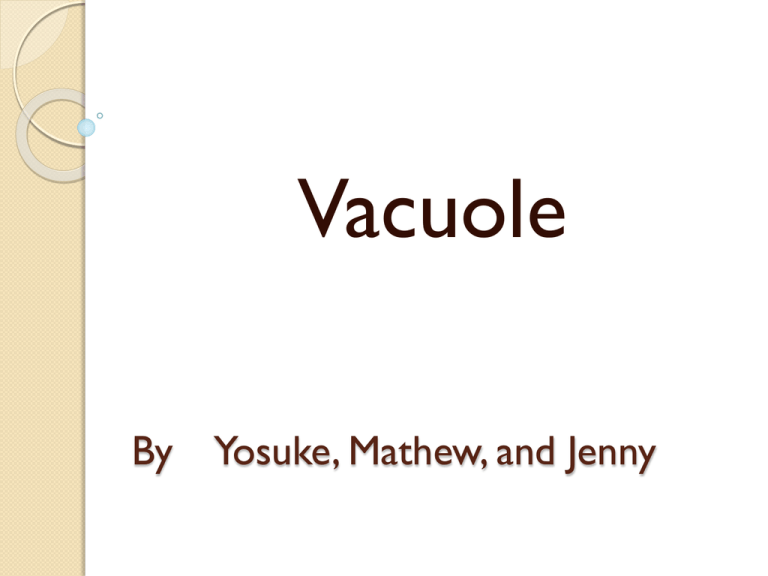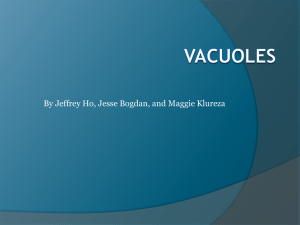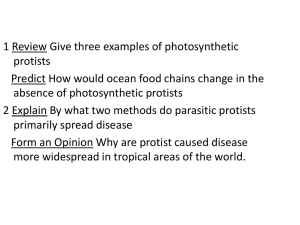vacuole
advertisement

Vacuole By Yosuke, Mathew, and Jenny Vesicle Vacuole is a type of vesicle. A vesicle is a small bubble enclosed by a lipid bilayer. What is vacuole? Vacuoles plays role in intracellular digestion and release of cellular waste products. What are the function of vacuole? Isolating materials that might be harmful or a threat to the cell. Containing waste products, small molecules and water(in the plant cells). Maintaining internal turgor pressure within the cell which can help to shape and buoyancy(the force that make an object rise or move upward) for plant cells Maintaining an acidic internal pH Exporting unwanted substances from the cell Allows plants to support structures such as leaves and flowers due to the pressure of the central vacuole In seeds, stored proteins needed for germination are kept in 'protein bodies', which are modified vacuoles What is inside the vacuole? Waste products (water, carbon dioxide, some acids…) Nutrients Energy products Where is the vacuole located ? Vacuoles are found in the cytoplasm of plant and animal cells. There is no specific place that the vacuole located in either animal cell or plant cell. In a plant cell, one large vacuole accounts for most the area in the cell. Animal cells can have multiple smaller vacuoles. Plant Cell Animal Cell Bacteria vacuoles Most prokaryotic cells do not have vacuoles however there are some exceptions. Large vacuoles are found in three genera of sulfur bacteria, the Thioploca, Beggiatoa and Thiomargarita. The vacuole can occupy between 40–98% of the cell. The vacuole contains high concentrations of nitrate ions and is thought to be a storage organelle. Fungi vacuoles Vacuoles in fungus have similar functions as those in plant cells. Vacuole in plant cells Vacuole tends to be large in the plants cell. It can regulates turgor pressure and create rigidity which will help to increase cell size during growth. Vacuoles in animal cell The vacuole in an animal cell is much smaller than in a plant cell. It is used to remove things from the cell including lipids, proteins and waste products. Plant vacuole VS Animal vacuole Plant Animal Size Big Small Amount Usually one More than one, varies Turgor Pressure In plant cells,Vacuoles help control the turgor pressure. Turgor pressure manages the rigidity of the cell. When a plant receives water, the central vacuole swells which creates a high turgor pressure and helps the plant stay upright. When the plant does not get enough water, the vacuoles shrivel and the plant wilts. The turgor pressure has decreased. Examples Q: why fruits are usually sweet? A: because vacuoles keep nutrients, that’s why the fruit is sweet. Q: why plants look colorful? A: because vacuoles keep the waste products, that’s why plants have various colors. What will happen if vacuole is not in the cell? The plant cells will wilt without sufficient water, turgor pressure drop. Which vacuole store those things. It doesn’t really matter if there is vacuole in animals cell because in animal cells there is no cell wall so almost all the small waste products can go through the cell membrane by themselves. Five facts 1) Plant cells usually have one big vacuole while animal cells usually have multiple small vacuoles. 2) Vacuoles help store things for the cell such as energy and waste. 3) Vacuoles help the structure of plants using turgor pressure. 4) The vacuole is a type of vesicle. 5) Prokaryotic cells generally do not have vacuoles except in some sulfurous bacteria.









